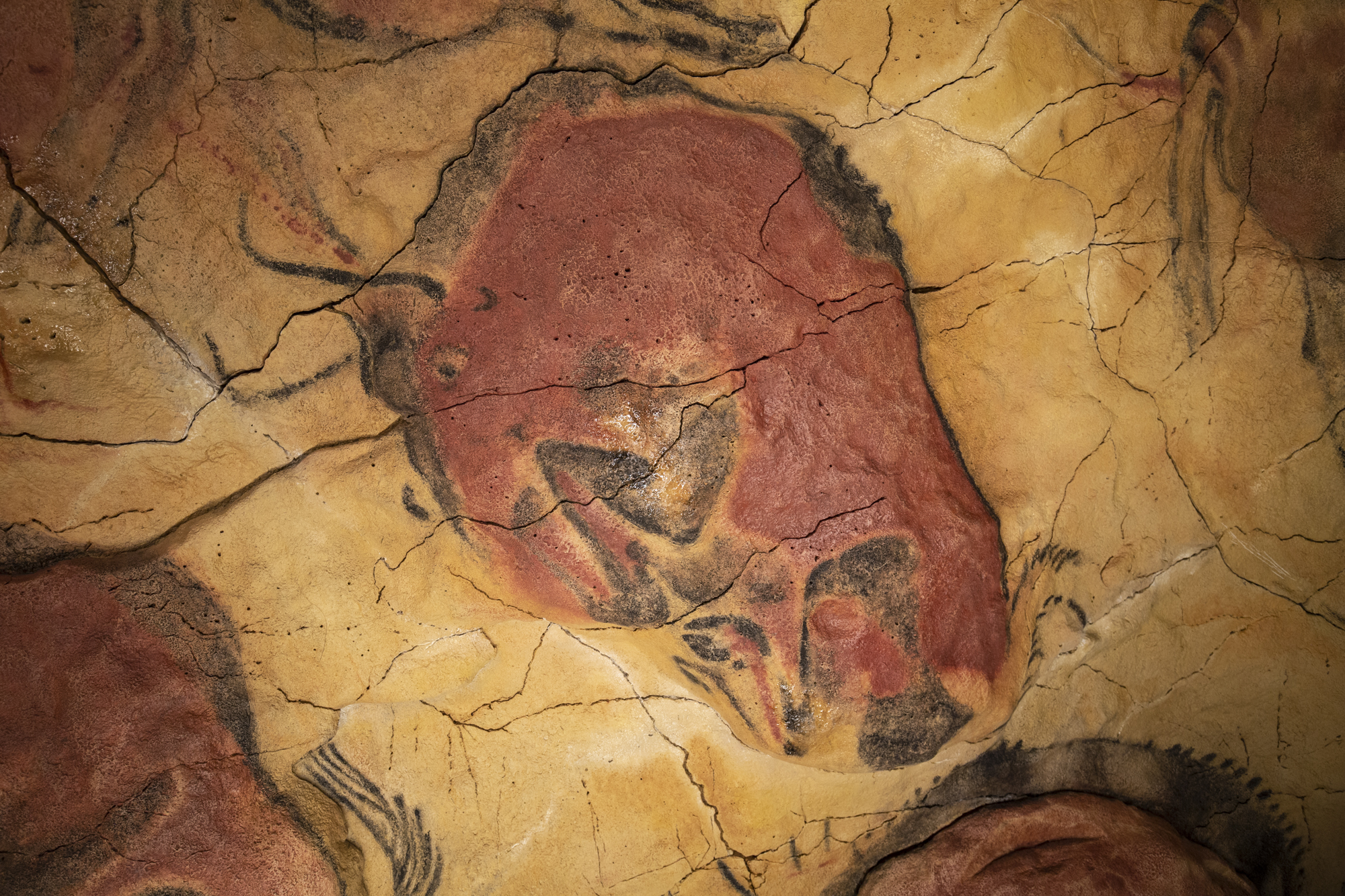MUSEUMS
Besides enjoying the main open-air geological, natural and cultural attractions in the Park on your own, or through guided tours, we encourage you to visit our fine quality museums.
Whether you are interested in the local culture and history, nature, the evolution of teaching, or the outstanding prehistory of the area and its links with our geology, you might enjoy fine quality exhibits that fit your interests and provide you with a deeper dive into Costa Quebrada.
ALTAMIRA
Altamira has been named the Sistine Chapel of Cave Painting. Its outstanding both scientific and cultural significance makes this cave one of the most relevant worldwide, which merited its designation as a UNESCO World Heritage Site in 1985. This recognition was later expanded to other relevant cavities in Northern Spain, such as El Pendo, in 2008, in order to provide Altamira with a broader context to allow a better understanding of the lifestyles and material manifestations of early Europeans during the Paleolithic.
It is also the most iconic among the sites containing Cave Art in the world. The groundbreaking discovery of its painting complex in 1876 was the first milestone in the knowledge of European Cave Art, which was previously unknown. In a renowned controversy which remained unsolved until 1902, the contemporary scientific community initially rejected the authenticity of its paintings, until new findings in France endorsed their genuineness.
The original museum opened in 1924, and it hosted a rich collection of findings made during the successive research campaigns carried out for decades in the site. After the closure of the cave for the broad public due to conservation concerns in 1977, it reopened for a very limited number of visitors, until the modern museum opened in 2002.
The detailed exact replica of the so-called Polychrome Ceiling, a spectacular gallery in which the bulges in the surface of the rock were used by the original artists as a means to provide paintings with volume and realism, was finished that year. The most prominent animals portrayed in the assemblage are tens of colourful steppe bisons, accompanied by hinds, boars, ibexes and horses.
A complementary visit to the MUPAC is strongly recommended, as it hosts and portrays an impressive collection of Paleolithic Portable Art.
MUPAC
This ample and modern museum hosts one of the richest and most important collections of prehistorical Portable Art in the world. It gathers the archaeological findings from the caves of Cantabria, including those listed as UNESCO World Heritage Sites along with Altamira.
A visit to the Museum is highly encouraged as a means to better understand and complement that of the prehistorical caves of Cantabria, especially El Pendo Cave, as it hosts the prolific collection of objects found in it.
Lower Paleolithic stone tools related to Homo neanderthalensis, or Epipaleolithic enigmatic Asturian pick-axes, majorly sourced in the abundant open-air archaeological sites of Costa Quebrada territory, are of paramount interest.
This exquisite assemblage of objects and artifacts is joined by the archaeological findings that provide insight into the prehistory and the history of the Cantabrian peoples since the roman conquer and the legendary resistance of the Iron Age Cantabrii until the Middle Ages.
The museum and collection will have a new venue in the near future, although for the moment they are placed in their current location at the historical Mercado del Este.
MARITIME MUSEUM
This popular museum provides a refreshing immersion in the Cantabrian Sea (the southernmost part of the Bay of Biscay), the history of its peoples and the naval technology that they developed, which was key to the first Spanish transatlantic voyages during the 16th Century.
It portrays collections and artifacts related to the oceanic dynamics, the links between humans and the sea, fisheries and naval techniques and technologies, the historical relevance of the Cantabrian Sea, marine biology and ecology, and the historical development of the marine sciences.
It is a longstanding collection, as some of its resources began to be collected as early as the 18th Century. The Biological Station of Santander and the Guarnizo Royal Shipyard Naval Museum are its direct precursor institutions. The former was created in 1886, and it was the first marine biological station in Spain. It later gave rise to the Spanish Institute of Oceanography (IEO), established in 1914.
The museum’s exhibit benefits from a well-populated collection of carefully selected objects, and superb scale-models and historical recreations can be enjoyed. The original laboratory of the biological station has been recreated and is portrayed along with some of the specimens from the early collection.
The aquaria section portrays several marine environments and the most relevant species that inhabit them, providing a surrounding experience that makes us aware of the urgent need to preserve oceans and coasts.
EL PENDO
If Altamira is an outstanding example of Cave Art, El Pendo provides one of the most important collections of Paleolithic Portable Art and ornamental objects in the Franco-Cantabrian zone. Because of this, it was incorporated as a valuable complement into the expansion of its UNESCO World Heritage Site in 2008.
These fine artifacts and decorated objects provide insight into the lifestyles and worldview of the successive occupants of the cave since some 82,000 years ago, when Europe was inhabited by Neanderthals, until the Bronze Age. The objects found in the cave are currently exhibited in the MUPAC, where they can be admired.
The scientific information obtained along successive archaeological research campaigns since 1878 allow us to understand the ancient geographical setting of Costa Quebrada along this period, and to imagine the evolution of fauna and flora as the important climatological changes in the area developed. Also, the links between those occupants and the geological and coastal resources can be interpreted, in times when, with important sea level drops, the coastal line migrated some 10 km offshore.
The cavity is also remarkable from a geological point of view, as it represents an advanced evolutionary stage, and is dominated by large volumes of ceiling collapse fallen blocks.
The visit concludes with the view of a 27 m. long impressive frieze portraying cave paintings. Discovered in 1997, hinds, ibexes and horses are represented using pointillistic techniques. All paintings were seemingly made in a single moment, some 20,000 years ago.
ETHNOGRAPHIC MUSEUM
The museum is located in the manor house of Pedro de Velarde, the prominent artillery captain that leaded the Spanish uprising against Napoleon’s army in Madrid on May, the 2nd of 1808.
The restoring work of Velarde’s manor house is a remarkable example of the recovery of historical buildings for cultural uses. Its wise execution anticipated in Cantabria the guidelines approved by UNESCO and ICOM in 1974.
Since the opening of the museum in 1966 until 1993 it portrayed its collections as an environmental recreation of a hidalgo * manor house of the end of the 18th Century.
It currently hosts the most important public-owned Ethnographical Heritage collection in Cantabria.
The exhibited objects have been selected attending to their informative and evocative qualities, and are thematically distributed in 11 displaying areas, designed in order to articulate a museographical story that highlights the main defining features and aspects of life and culture of rural Cantabria.
Also, a room devoted to the historical figure of Velarde has been preserved, which establishes an interesting contrast between the different lifestyles according to social structure.
* Shortened word for “hijo de algo”, in 17th and 18th centuries Spain, the lower class among the noblepersons.
MUSEUM OF SCHOOL
Located in the house of the Cantabrian folklorist writer José María de Pereda, which was built in 1872, the Museum of School preserves the Historical School Heritage of Cantabria and conducts research on the evolution of the institution along History.
It gathers an extensive documentary record focused on pedagogical, historical and sociological research, and a rich collection of school objects and materials that feed the permanent and temporal exhibitions.
In the display area, several classrooms from different historical moments have been faithfully recreated, and they allow the visitor to dive into the ambient, pedagogical principles and orientation characteristic to each period, and to understand its evolution.
These historical schoolrooms are:
- Late 19th-early 20th Century classroom
- Alfonso XIII rule classroom
- Spanish Second Republic classroom
- Franco military dictatorship classroom
- Natural History laboratory
- Posters and Maps gallery
Visiting the museum is highly recommended for teachers who wish to learn about the evolution of schools in Spain.
CASA DEL ÁGUILA
Two adjacent superb examples of the civil architecture of the 16th and 17th centuries, located at the center of the monumental village of Santillana del Mar historical-artistical ensemble, host this cultural center.
The northernmost building is called La Casa de la Parra (the Grapevine House), and was built in the early 16th Century. It got its name from the large grapevine that covered the façade, before the wall was restored with the currently visible timber framed brickwork. This Gothic secular style building portrays two doors framed in pointed arches.
Besides enjoying the main open-air geological attractions in the Park, we encourage you to visit our museums. Whether you are interested in the local culture and history, nature, the evolution of teaching, or the outstanding prehistory of the area and its links with our geology, you might enjoy fine quality exhibits that fit your interests and provide you with a deeper dive into Costa Quebrada.
ALTAMIRA
Altamira has been named the Sistine Chapel of Cave Painting. Its outstanding both scientific and cultural significance makes this cave one of the most relevant worldwide, which merited its designation as a UNESCO World Heritage Site in 1985. This recognition was later expanded to other relevant cavities in Northern Spain, such as El Pendo, in 2008, in order to provide Altamira with a broader context to allow a better understanding of the lifestyles and material manifestations of early Europeans during the Paleolithic.
It is also the most iconic among the sites containing Cave Art in the world. The groundbreaking discovery of its painting complex in 1876 was the first milestone in the knowledge of European Cave Art, which was previously unknown. In a renowned controversy which remained unsolved until 1902, the contemporary scientific community initially rejected the authenticity of its paintings, until new findings in France endorsed their genuineness.
The original museum opened in 1924, and it hosted a rich collection of findings made during the successive research campaigns carried out for decades in the site. After the closure of the cave for the broad public due to conservation concerns in 1977, it reopened for a very limited number of visitors, until the modern museum opened in 2002.
The detailed exact replica of the so-called Polychrome Ceiling, a spectacular gallery in which the bulges in the surface of the rock were used by the original artists as a means to provide paintings with volume and realism, was finished that year. The most prominent animals portrayed in the assemblage are tens of colourful steppe bisons, accompanied by hinds, boars, ibexes and horses.
A complementary visit to the MUPAC is strongly recommended, as it hosts and portrays an impressive collection of Paleolithic Portable Art.
MUPAC
MUSEUM OF PREHISTORY Y ARCHAEOLOGY OF CANTABRIA
SANTANDER | SANTANDER
This ample and modern museum hosts one of the richest and most important collections of prehistorical Portable Art in the world. It gathers the archaeological findings from the caves of Cantabria, including those listed as UNESCO World Heritage Sites along with Altamira.
A visit to the Museum is highly encouraged as a means to better understand and complement that of the prehistorical caves of Cantabria, especially El Pendo Cave, as it hosts the prolific collection of objects found in it.
Lower Paleolithic stone tools related to Homo neanderthalensis, or Epipaleolithic enigmatic Asturian pick-axes, majorly sourced in the abundant open-air archaeological sites of Costa Quebrada territory, are of paramount interest.
This exquisite assemblage of objects and artifacts is joined by the archaeological findings that provide insight into the prehistory and the history of the Cantabrian peoples since the roman conquer and the legendary resistance of the Iron Age Cantabrii until the Middle Ages.
The museum and collection will have a new venue in the near future, although for the moment they are placed in their current location at the historical Mercado del Este.
MARITIME MUSEUM
This popular museum provides a refreshing immersion in the Cantabrian Sea (the southernmost part of the Bay of Biscay), the history of its peoples and the naval technology that they developed, which was key to the first Spanish transatlantic voyages during the 16th Century.
It portrays collections and artifacts related to the oceanic dynamics, the links between humans and the sea, fisheries and naval techniques and technologies, the historical relevance of the Cantabrian Sea, marine biology and ecology, and the historical development of the marine sciences.
It is a longstanding collection, as some of its resources began to be collected as early as the 18th Century. The Biological Station of Santander and the Guarnizo Royal Shipyard Naval Museum are its direct precursor institutions. The former was created in 1886, and it was the first marine biological station in Spain. It later gave rise to the Spanish Institute of Oceanography (IEO), established in 1914.
The museum’s exhibit benefits from a well-populated collection of carefully selected objects, and superb scale-models and historical recreations can be enjoyed. The original laboratory of the biological station has been recreated and is portrayed along with some of the specimens from the early collection.
The aquaria section portrays several marine environments and the most relevant species that inhabit them, providing a surrounding experience that makes us aware of the urgent need to preserve oceans and coasts.
EL PENDO
If Altamira is an outstanding example of Cave Art, El Pendo provides one of the most important collections of Paleolithic Portable Art and ornamental objects in the Franco-Cantabrian zone. Because of this, it was incorporated as a valuable complement into the expansion of its UNESCO World Heritage Site in 2008.
These fine artifacts and decorated objects provide insight into the lifestyles and worldview of the successive occupants of the cave since some 82,000 years ago, when Europe was inhabited by Neanderthals, until the Bronze Age. The objects found in the cave are currently exhibited in the MUPAC, where they can be admired.
The scientific information obtained along successive archaeological research campaigns since 1878 allow us to understand the ancient geographical setting of Costa Quebrada along this period, and to imagine the evolution of fauna and flora as the important climatological changes in the area developed. Also, the links between those occupants and the geological and coastal resources can be interpreted, in times when, with important sea level drops, the coastal line migrated some 10 km offshore.
The cavity is also remarkable from a geological point of view, as it represents an advanced evolutionary stage, and is dominated by large volumes of ceiling collapse fallen blocks.
The visit concludes with the view of a 27 m. long impressive frieze portraying cave paintings. Discovered in 1997, hinds, ibexes and horses are represented using pointillistic techniques. All paintings were seemingly made in a single moment, some 20,000 years ago.
ETHNOGRAPHIC MUSEUM
The museum is located in the manor house of Pedro de Velarde, the prominent artillery captain that leaded the Spanish uprising against Napoleon’s army in Madrid on May, the 2nd of 1808.
The restoring work of Velarde’s manor house is a remarkable example of the recovery of historical buildings for cultural uses. Its wise execution anticipated in Cantabria the guidelines approved by UNESCO and ICOM in 1974.
Since the opening of the museum in 1966 until 1993 it portrayed its collections as an environmental recreation of a hidalgo * manor house of the end of the 18th Century.
It currently hosts the most important public-owned Ethnographical Heritage collection in Cantabria.
The exhibited objects have been selected attending to their informative and evocative qualities, and are thematically distributed in 11 displaying areas, designed in order to articulate a museographical story that highlights the main defining features and aspects of life and culture of rural Cantabria.
Also, a room devoted to the historical figure of Velarde has been preserved, which establishes an interesting contrast between the different lifestyles according to social structure.
* Shortened word for “hijo de algo”, in 17th and 18th centuries Spain, the lower class among the noblepersons.
MUSEUM OF SCHOOL
Located in the house of the Cantabrian folklorist writer José María de Pereda, which was built in 1872, the Museum of School preserves the Historical School Heritage of Cantabria and conducts research on the evolution of the institution along History.
It gathers an extensive documentary record focused on pedagogical, historical and sociological research, and a rich collection of school objects and materials that feed the permanent and temporal exhibitions.
In the display area, several classrooms from different historical moments have been faithfully recreated, and they allow the visitor to dive into the ambient, pedagogical principles and orientation characteristic to each period, and to understand its evolution.
These historical schoolrooms are:
- Late 19th-early 20th Century classroom
- Alfonso XIII rule classroom
- Spanish Second Republic classroom
- Franco military dictatorship classroom
- Natural History laboratory
- Posters and Maps gallery
Visiting the museum is highly recommended for teachers who wish to learn about the evolution of schools in Spain.
CASA DEL ÁGUILA
Two adjacent superb examples of the civil architecture of the 16th and 17th centuries, located at the center of the monumental village of Santillana del Mar historical-artistical ensemble, host this cultural center.
The northernmost building is called La Casa de la Parra (the Grapevine House), and was built in the early 16th Century. It got its name from the large grapevine that covered the façade, before the wall was restored with the currently visible timber framed brickwork. This Gothic secular style building portrays two doors framed in pointed arches.
































